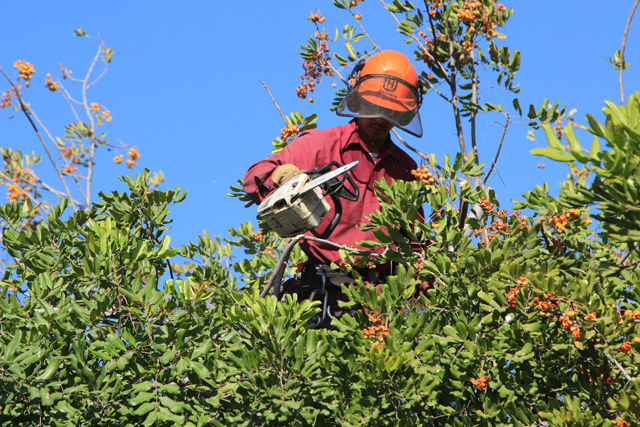In an era where eco-friendliness is more crucial than ever, the contribution of arborists has gained great importance. These tree specialists are not just tree surgeons; they are essential supporters for green forestry methods. By applying their knowledge and expertise, certified arborists help manage and maintain the health of urban and countryside forests alike, ensuring that our green spaces thrive for generations to come.
Employing a certified arborist is an crucial step for anyone looking to enhance their property’s landscape while also supporting natural ecosystems. From grasping the principles behind effective tree trimming to identifying diseases and spotting invasive pests, arborists play a vital role in protecting tree health. In this article, we will explore various aspects of arboriculture, including the equipment arborists employ, the approaches they apply, and how their skills contributes to eco-friendly tree care in our localities.
Importance of Hiring Certified Tree Care Professionals

Employing a qualified arborist is important for maintaining the vitality and longevity of your trees. Licensed arborists have undergone extensive training and education, arming them with the skills necessary to maintain trees efficiently. They grasp the complexities of tree biology, soil health, and environmental factors that can affect your trees' health. O'Kennedy Tree Care allows them to provide suitable recommendations specific to your specific landscape, resulting in a substantial difference in tree care outcomes.
In addition to their specialized knowledge, certified arborists are educated to follow industry standards and best practices. This conformity to guidelines not only encourages safer tree care but also helps prevent injury and property damage during maintenance activities. The certification process often includes reviews of tree risk management, pruning techniques, and tree health evaluations, allowing arborists to tackle anticipated issues proactively. Engaging someone with this distinction means you are investing in superior care that emphasizes both your property and the trees themselves.
Additionally, the skill of qualified arborists helps in recognizing signs of disease, pest infestations, and structural issues that may be missed by non-certified individuals. Their ability to identify problems early can lead to more efficient interventions, ultimately saving you efforts and money in the long run. By safeguarding the safety and health of your trees, qualified arborists play a significant role in improving the beauty and value of your property, while also contributing to environmental sustainability.
Key Practices in Green Tree Care
Eco-Friendly tree management starts with meticulous preparation and analysis of tree vitality and tree type suitability. Arborists evaluate the local biome, considering factors such as ground conditions, weather, and local species to recommend fitting tree planting and maintenance practices. This guarantees that trees prosper in their surroundings and maintain biodiversity, which is crucial for the overall vitality of city and rural landscapes.
An additional important practice is thoughtful tree pruning. Arborists employ techniques that enhance tree form and health, reducing the risk of disease and damage. By eliminating dead branches and promoting optimal growth patterns, they make sure that trees can resist stresses such as wind and disease. This not just prolong the life of the tree but also adds to a healthier environment for surrounding buildings and residents.
Moreover, arborists advocate for the use of organic and eco-friendly treatments in controlling pests and diseases. Differing from synthetic treatments that can hurt the surrounding ecosystem, these sustainable practices prioritize the health of the tree and its ecosystem. By integrating integrated pest management strategies, arborists assist sustain ecological balance while efficiently controlling pest populations and supporting the durability and health of trees.
Obstacles and Approaches in Arboriculture
The sector of arboriculture faces numerous issues, particularly with the increasing threats from climate change, urbanization, and invasive pests. These factors not only impact tree health but also complicate the management of city woodlands. Arborists are tasked with the challenging job of observing and sustaining tree health in frequently adverse conditions, where natural stress factors can lead to higher disease vulnerability and tree mortality.
To tackle these challenges, tree care specialists employ a variety of innovative solutions. IPM strategies are increasingly used to address pest problems while minimizing the application of toxic chemicals. Furthermore, information about sustainable practices is shared by arborists to educate property owners about correct tree care, including suitable watering, soil coverage, and pruning techniques that enhance tree resilience against natural pressures.
Additionally, cooperative efforts between arborists and urban planners have become essential in ensuring the viability of urban forests. By supporting for tree conservation during construction and encouraging the growth of indigenous plants, arborists help to establish a healthy ecosystem in city areas. These solutions not only enhance tree health but also ensure that city environments remain lively and advantageous to both humans and wildlife.
